UP TO THE MINUTE
Brad Van Dam - The Essentials of Edge Metal - PODCAST TRANSCRIPTION
April 25, 2023 at 6:00 a.m.Editor's note: The following is the transcript of a live interview with Brad Van Dam from MTL Holding. You can read the interview below or listen to the podcast.
Heidi J. Ellsworth: Hello, and welcome to another MetalCast for a MetalCoffeeShop. My name is Heidi Ellsworth and I am here today with one of the leading gentleman in the metal edge world and overall roofing world, and we're here to talk about Metal edge because this is MetalCoffeeShop. So Brad, welcome to the show.
Brad Van Dam: Thank you, Heidi. That introduction was way too gracious.
Heidi J. Ellsworth: But so true.
Brad Van Dam: The leading edge is [inaudible 00:00:39].
Heidi J. Ellsworth: Yeah, no pun.
Brad Van Dam: Thank you.
Heidi J. Ellsworth: I love it. Well, Brad, for those out there who maybe don't know you, I would love it if you would introduce yourself and then we're going to get into talking about edge metals.
Brad Van Dam: Appreciate it. So I am Brad Van Dam. I'm the VP of sales for MTL Holdings. We're the parent company of Metal-Era, Hickman Edge Systems and Citadel Architectural Products. Metal-Era is the largest manufacturer of fascia and coping in North America. MTL Holdings purchased Hickman Edge Systems, the second-largest manufacturer of that, which was a brand that started back in 1945. And in addition, just recently in September of '22, we purchased Citadel Architectural Products, which is a laminated panel manufacturer who is in the ACM/MCM industry. So about 300 awesome humans working in our organization. Mostly manufacturing, fascia, coping, gutters, downspouts, trims, term bars, components that are used for terminating the perimeter edge on a commercial roof, and then now as of September, laminated panels for the ACM and MCM industry.
Heidi J. Ellsworth: Wow. And you've done all of this just in the last couple of years? I mean, not the history of the overall of the individual companies, but bringing everybody together under the MTL Holdings?
Brad Van Dam: Yeah, we've had a busy run since 2020 and I was reflecting the other day the history of the business at Metal-Era. If you look back, some of the investments that the family made were during times that were uncertain or choosing to invest in a new building, 2008, choosing to invest in automation and robotics. Expanding during recessions, continuing to keep people employed, growing, investing in leadership training during times where maybe the market was down or something was different. So I look back and say, okay, we started kind of this heavy run in 2020 of being acquired by an equity firm who really challenged us to continue growing and the people here have responded in this business by trying to bring more members into the family and continuing, both are organic and acquisition growth.
Heidi J. Ellsworth: Let's just talk about that for a little bit. The family owned business of Metal-Era. Let's talk about the history of them when they started and brought it about and then maybe let's add on after that Hickman, because I've worked with both of your companies and wow, two amazing companies.
Brad Van Dam: Yeah, so Gene Mallinger purchased a Metal-Era from a family in another company that was running it and it was founded in 1980. Gene bought it in 1989 and his sons eventually came into the business and the most recent, our CEO and president is Tony Mallinger. Tony was his oldest son who has continued to work in the business since he came in and he's our current CEO and President today. Metal-Era was a small regional manufacturer that was really handling a lot of roofers in the state of Wisconsin and we were part of a distribution company and at that point, once Gene acquired it, we really started fabricating for people outside of the Wisconsin market, added independent rep organizations, many of which are still with us today since those early years in the '80s when they first came on board. We started looking at getting closer to customers.
Where can we add manufacturing facilities? What could we do to get closer to businesses that buy our products? Really, our brand had continued to develop into the largest specification product in the US primarily because it's engineered well, has a long history of performance. And a lot of our membrane partners really trust us to secure their membrane, which is the main reason roofs fail in wind event. In 2021, we were planning an expansion into the south and the opportunity presented itself to acquire Hickman Edge systems from OMG. At the time it was named OMG Edge Systems. They had changed the name. Hickman was founded in 1945. It's been around for a very long time, it was the first metal edge company in the US, we like to say. And had a really long history. It was the second highest specified brand in the country.
They had had a long history of independent representation and after they were acquired, they started kind of changing over to a little bit different model. We saw the opportunity when it was offered to acquire it and then go back to their roots. We added independent rep organizations to help promote the Hickman brand. We aligned some processes, we invested into their facility with a lot of new equipment and we were able to really drive some change into aligning that particular brand back into something special again. A large amount of people that that brand since 1945 meant a lot to and now, including the employees that work there. And so, it was pretty special for us to be able to get that back into the market and give people some options, who to deal with for Edge Metal.
Heidi J. Ellsworth: Bringing it all back together. And Hickman was a family owned business too?
Brad Van Dam: It was, yes.
Heidi J. Ellsworth: Yeah.
Brad Van Dam: And the Hickman family had certainly done a great job of running that for a long time. So we were very excited about it and again, it meant a lot to lot of the people that had lived that brand or supported that brand for a very long time.
Heidi J. Ellsworth: And I don't want to leave Citadel out, so let's just talk about that for just a second. I mean, that acquisition and another great company.
Brad Van Dam: So very well respected name in the industry for ACM and MCM, not the largest, not the smallest, but perhaps one that really had been known for customization, really kind of hitting the mark on certain special products for ACM and MCM, did a great job with their anodized products. Really, as we started reviewing the business, it aligned with a lot of our customer's needs. So many people were trying to find their way from the perimeter down into the rest of the envelope. And the business really made sense to us as we started looking at what a lot of our existing customers were already doing. They're onsite, they're building out that perimeter, they're encapsulating it, they need to protect it, and they're trying to bring that aesthetic value along with an engineered system value. So it really seemed to fit well. That was a division of Weyerhaeuser, I believe, founded back in '92. And that company had really done a good job of growing and then kind of sustaining consistency. If I were to describe it, Citadel was a very consistent business that we saw.
There were people that had been there a very long time, cared a lot about the business and their customers. And we certainly saw that they could benefit from maybe some additional investment, and some new folks to help drive growth to get back to a really good growing trend. Currently, we are expanding and moving them into a new facility, so we're adding, I think it's around 30,000 square feet roughly to their footprint and bringing it up to close to a 100,000 square feet, moving them into a little bit of different location, maybe closer for some, farther for others, but perhaps in a nice area where the business can continue its growth. And we're hiring a lot of new folks on that side to try to continue building a good team. We added a VP of walls and GM for that division. And so, he came to us with a lot of experience really on the wall side of the business and is really worked to try to build a solid team to be able to grow that company and reinvest in it.
And I think immediately those that are part of it have seen that we have not shied away from putting more money and effort into reviving that Citadel brand and kind of getting it back to a really nice growth path. So very excited, it's awesome to see the opportunity. It's created for a lot of people, both in Asheville and in that Indianapolis market. All of them are hiring, they're looking for folks, they're looking for people to advance. They're looking for those that maybe had been in positions to step up and take more responsibility or move ahead. Really, it's been kind of fun to watch the additional opportunity that was generated for folks that are interested in participating with us as we continue our growth journey.
Heidi J. Ellsworth: That just makes you feel so great when you see all of it come together. I am just so impressed. I mean, with what you're doing with walls and what you already know, the roof and everything you've done with edge metal. But I want to kind of level set just a little bit for those out there who maybe are not familiar with edge metals, can you kind of talk a little bit about the importance of edge metal and especially, I mean, we already know on the roof, but on the building envelope in those transitions. I mean, it's critical you're bringing it all together.
Brad Van Dam: So for us, really spending a lot of time talking about how we've tried to engineer out risk for our partners, the base of it is that at the edge of a perimeter of a roof to wall transition, it takes a lot of force from wind in a wind event. So hurricanes, tornadoes, derechos, even the high wind thunderstorms that we all seem to be getting, we're seeing more frequently in wherever we live. Through the years, a lot of folks much smarter than I and much longer invested in this industry have done a lot of studies about how the roof edge is one of the primary, if not the primary failure point in a high wind event for a commercial roof. And so, a lot of these parts were manufactured by contractors. It's still today, a fair portion or manufactured in shops or customized for a job site condition to try to match something existing.
And that creates a lot of varying degrees of engineering capability, manufacturing capability, consistency, auditing, repeatability, that comes with thousands of different manufacturing processes. What we've really tried to do is try to simplify that for a specifier or a contractor who is primarily a specifier in many cases by giving them an engineered system that they know is going to meet a certain pressure of pull off or comply with an insurance company request or requirement to use that type of product. And so, if we know that you're in an area that gets 90 mile an hour winds, 120 mile an hour winds, whatever that may be in your code requirement, you can now actually specify a part that will work to meet that need or resist those winds in a high wind event and perhaps keep your roof on longer. Sustainable, resilience, all the words that are buzzing around the industry.
The fact becomes the longer your roof stays in place without leaking or blowing off, the better you're going to be. And so, that's a real simple fact. We really like the idea of protecting the primary failure point with a strong engineered, repeatable robotically made system that helps the customer reduce their risk. So that's really what we've started with. What's been interesting as the industry has continued transitioning to a higher level of subcontract labor, having difficulty finding labor, having difficulty finding manufacturing labor at a installation contractor site, really, no one's been able to avoid that particular restriction for their business growth. And so, we've transitioned since '08 into focusing on automation of processes like most manufacturers do.
It's what we focus on. How do we get faster? How do we get better at what we're doing? How do we make that part more consistently every time and get our throughput up? And so, I think a big portion in my now 11 years here is watching that transition to how do we support the contractor's labor need more efficiently. We don't often replace a contractor's shop fully, they still need a shop to be able to manufacture parts or components that come up with a holy cow, I need that tomorrow. But maybe in their winter times or summertime when they can redeploy staff to supervise or estimate or do something else, we can handle a big portion of the manufacturing that would fall on them.
Heidi J. Ellsworth: It's so important. Everybody has to figure out that labor issue and the more automation, the more prefabricated, the easier it's going to be for them on the roof. And talking about that, I have to say, I did your plant tour, which was amazing.
Brad Van Dam: Thank you.
Heidi J. Ellsworth: And I loved it. I mean, the technology in robotics that MTL Holdings is doing across all of their companies is pretty dang amazing. So Brad, when you talk about it, I mean, you guys have it really from outside looking in, and I'm kind of guessing this is true, this looks like there's been a very substantial commitment to technology and robotics.
Brad Van Dam: Yeah. And I'll start with a false pretense that comes up a lot when you hear robotics in manufacturing that it replaces humans in jobs or it causes issues for those that are here. I would say that what's been probably my favorite part of seeing all the automation since they started investing in '08 and have continued investing since is that it's allowed folks to upskill and move to different positions that were necessary. And so, net employment continues, at least from our perspective on finding more people and bringing them in. But we've been able to take some of the jobs that maybe are more risky for people to operate and use, maybe are more mundane or repeated, and try to get those into a systemized, automated robotic approach.
Many of those folks then who are doing those tasks originally can now move into other positions. Perhaps leading customer service or technical sales and estimating, perhaps moving from a welding process to a process engineering. Perhaps moving into an internal takeoff position from operating a break. And so, what's really been fun to watch is that transition, invest in that automation, but find ways to take folks that are doing those repeatable part movements manufacturing and get them into other positions that help bring value to the business as well. So yes, the business has invested heavily in automation. The people are still the people and very important to the business. And so, I wanted to first address that part as much as it's cool on the plant tour, and I agree with you, it's one of my favorite things to do, is take people through. The people here are still my favorite part.
There's a lot of good humans at all three facilities that make it a very fun place for us to work. We have now one best workplaces in Wisconsin in 2020, 21 and 22, and as I like to tell people, we've been nominated for that list and made it onto that with a bunch of other great companies. But it's really interesting when you think back, those are probably three of the worst years to be either an employee or an employer as far as difficulties go and all the challenges both sides of that equation would've faced. So it's really fun to watch that automation kind of lift some folks up. So it's good to see.
Heidi J. Ellsworth: Well, and what I saw on your floor too was diversity, and it was the diversity really, you could tell was ramped up by the robotics, by the technology. I mean, I just remember seeing this one lady and she was lifting and moving things, but it was all with hydraulics. It was so impressive and I had to go up and say, "Hi, this is just..." It's so cool to see that diversity in your manufacturing plant and technology is really allowing that.
Brad Van Dam: It's absolutely true that we've been able to get more folks engaged and involved in jobs that maybe they wouldn't normally have gone after or thought about. We've also had some very good success in bringing folks from either the high school launch program and supporting their growth and development or one of the local technical college programs and getting them in. And I think it just helps expand the opportunity for anyone interested in putting forth effort. It's not easy to change a dynamic or get everyone in that you hope to get into a situation. But I think it is easy to offer that opportunity for more people to get in and try it and take ownership of that.
And that's one of the things that has been great to see here. Our diversity numbers are tracked, they're reported monthly for us. How are we doing? Are we moving the right direction? What's our ratio meant to women in the factory? What's our ratio for the rest of our employee diversity and how do we get better at it? We're not perfect. I don't know of anyone that is, and I don't know exactly what perfect is, right?
Heidi J. Ellsworth: Yeah, I don't think so.
Brad Van Dam: But I know that we're doing our best to continue to get better on creating more opportunity for more folks here and products and reinvestment in our facility does absolutely do that as well.
Heidi J. Ellsworth: Yeah, it was pretty obvious to me. You guys are very committed and I love that, and it doesn't stop in the plants. We're seeing your same push for technology onto the rooftop and the Falcon technology, so impressive. Maybe share a little bit about that and how that's helping everybody.
Brad Van Dam: Yeah. Oh, that's great. Actually, this was our first year back at IRE after what I was told was about a 20-year hiatus of boothing. So we actually had our first booth at IRE this year and we were so happy to be back and had some great conversations and one of the key parts we were showing was the Falcon, which you mentioned, and that was a several year development for us, a very large financial investment of both a tool and an app that allow for an operator to measure very technically the roof edge for fabrication and to simplify the paperwork and all the installation on the backend for the contractor with kind of a paid by numbers. Here's where this part goes, installation. Today, skilled sheet metal labor is not falling off trees. It's not something that everybody in school is raising their hand and saying, "Please, can I work with metal?"
"Please, can I go up on a roof, 60 feet in the air?" Anything we could do to make that process easier for customers to either buy or install our parts and hopefully help overcome their need for someone who can measure a radius having to run out on that roof every time. The other thing I've noticed is just certainly in our industry, just generically speaking, it seems that the average age is moving up the ladder. We're not seeing the fill of young group behind us as vast as we need. You listen to NRCA talk about the need for more workers on a regular basis and bringing young in to replace future retirees who have earned and deserve their retirement. I think that we looked at the Falcon being able to do that measurement and offering that service through our region techs as an opportunity to help with that labor shortage and that skill gap through automation.
It was kind of a flyer on our end, who knows how it's going to be accepted, how quick it'll be adopted. Again, contractors are self fabricating in many cases, so sometimes my customer is my competitor in that case, which in 90% of the applications, that's really what it is. So what's good is it keeps us fighting to earn the business, and this was another tool and an opportunity for us to add value during those sales discussions. How can we come out and measure for you? We've got a great group of region techs that are able to go out and do those field measurements with the tool. It's unique to us. It's faster, it's quicker. It really does alleviate the stress and pressure on the contractor to have someone that can measure that or fabricate it correctly. And if we make a mistake, we own that. So that's on us.
Heidi J. Ellsworth: Well, and to me, it really kind of just amplifies what you're already doing around customer service. You kind of know about Metal-Era, Hickman, Citadel, all known for great customer service, and when I was there, walking, you had an very large on hand inventory because you know how important that is. So let's just talk about that a little bit. In today's world, things are moving so fast, but how customer service is still number one. I mean, it just has to happen.
Brad Van Dam: It is. So I'll say two things. Our people and our automation allow us to ship about 65% of what we produce next day. And so, that cannot happen without a high volume of consistency, repeatability, automation, and as you noted, inventory. We have customers that have varying needs. Some will order six months in advance, some will order, I forgot and I need it like yesterday. And so, being able to service that variation is never simple for customers, especially if you're shipping from your multiple locations now. But the faster that you can get it out in some cases, the broader your customer base will be. One of the things that was great this year, we've invested heavily becoming involved in NWIR, a number of our customer service folks. Were able to go down and participate with NWIR. We've really been able to expand our reach in getting more folks involved in meeting our customers, talking to our roofing customers at IRE, talking to maybe our reps at some of our rep meetings, and actually getting that feedback from those that do use us more frequently.
One of my stories from IRE, that was awesome to me, I had a contractor in Michigan come and talked to the booth and he said, "I just want to tell you I can get edge metal finished good faster from you." He told me about an order that he had ordered a day before he had left, and he had already gotten the order confirmation and said that he was going to have it arriving on such and such day, and it was faster than he could have called, gotten flat sheet, gotten it into his shop, fabricated it there, had a local shop do it. And it was already on a truck on its way to him and he was raving about that. So I mean, I wish I would've recorded him and had that conversation, but I was so excited that not only I could hear it, but a bigger group of our people from customer service, from our reps could actually hear that kind of feedback. Because unfortunately in business, you hear the worst things loudest. And so, it was so much fun to be an IRE and hear a lot of that positive feedback.
Heidi J. Ellsworth: All the positive. We all work so hard to have that customer service and to bring us all together and uplift overall. And so, it's been great. And I mean, you have all been so reactive to the customers. I mean, even last summer being the first ones to come out and say, "Hey, we're going to bring our prices down because things have changed." And I know everything fluctuates as it goes through, but those are really important. So for those contractors out there and we have them all listening to us, roofing contractors, siding contractors, curtain and wall, building envelope, you name it, and some sheet metal folks, how can they get involved with you? How can contractors really start building that relationship and making that change to prefabrication?
Brad Van Dam: Yeah, that's a great point. So we have roughly 60 independent reps throughout the US that cover basically any and everywhere in the continental and Puerto Rico and Hawaii and all those other areas, even up into Alaska. So those reps are located on our website, and you can speak with one of our reps through our finder, either on the Metal-Era site or the Hickman site, so metalera.com or hickmanedgesystems.com. Those would be the two main places to go. First, start putting your zip code and immediately get a contact 800 number, 800 558 2162 brings you into the main metal airline. If you need either brand, we can transition you to either of those brand locations and get you to the right person. Feel free to make that call and get access there. I will also say on the website, the Contact us form, they are ridiculously responsive to that.
Heidi J. Ellsworth: I love it.
Brad Van Dam: I often see replies to our automated emails, anything that goes out that way. The group has done a really good job of getting that back to people who care and will call you back. Distributors and distributor partners, all the major distributors have access to work with our lines. So if you're not set up in the format that you're a gigantic contractor and you've got 74 different sources and you just got a local distributor that you work with, go down, have a conversation with them, talk to them about the Metal-Era Hickman brand on that side and work your way into it. Any one of those can reach out to us if they've got a relationship with their corporate office or one of those and can work their way through.
So I'm say those are the main ones. On the Citadel side, they have independent reps as well. Really good group if you're into ACM or MCM, it's a very good opportunity to get to know Citadel. They have some complete package systems that don't require, let's say shop fabrication, so you can site adapt an ACM or MCM view with tested systems that have extrusions, that are painted and color matched. They have a very nice color palette. We're helping them align those colors trims to the ACM and MCM, which tends to be an issue in the industry. You buy one color of this and you need another color of that.
How do you get a sheet to match this part? They've done a great job, even in the short time that Josh and that team has been working hard at Citadel to work through those issues for customers and make sure that they find a way to get them what they need. So certainly feel free to reach out Citadel Architectural Products as the name of the company, find that on the website, and that's another place to go. I know they're also very responsive and active, so good opportunity for you there. They work through a large organization of distributors and rep partners there as well and can direct you to the right person to keep things moving.
Heidi J. Ellsworth: That is great. That is great. Well, and just so you know, you can find all these companies on RoofersCoffeeShop and on MetalCoffeeShop too, so that makes it really easy. We'll get you to all these places. So if you aren't repeating this, trying to get all this written down, just remember you can just go right onto the coffee shops and find Hickman, Citadel and Metal-Era, all the MTL holding companies. Brad, thank you so much for being here today. I love this.
Brad Van Dam: Heidi, always a pleasure to hang out with you remotely or in person. I love what you guys are doing with MetalCoffeeShop and RoofersCoffeeShop. Anything we can do to help, let us know and appreciate all the good work and effort.
Heidi J. Ellsworth: Sounds great. And I'll be seeing you at a couple of events coming up here pretty soon.
Brad Van Dam: I'm sure you will.
Heidi J. Ellsworth: You will.
Brad Van Dam: All right.
Heidi J. Ellsworth: And thank all of you for watching. This is great. As you know, this is on YouTube. This is a video cast. It's also on your favorite podcast channel, so be sure to check it out. Check out all of our MetalCasts on MetalCoffeeShop under the read, listen, watch, look for MetalCast and also on your favorite podcast channel. Be sure to subscribe and set those notifications so you don't miss a single episode, and we'll be seeing you literally on the next MetalCast.
Recommended For You
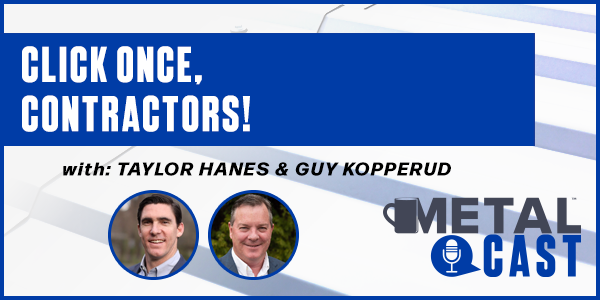
Taylor Hanes and Guy Kopperud - Click Once, Contractors! - PODCAST TRANSCRIPT
Read More ...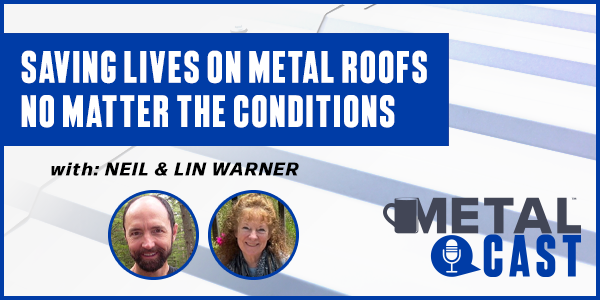
Neil and Lin Warner - Saving Lives on Metal Roofs No Matter the Conditions - PODCAST TRANSCRIPT
Read More ...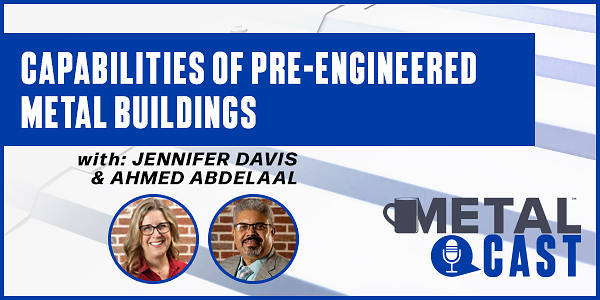
Jennifer Davis and Ahmed Abdelaal - Capabilities of Pre-Engineered Metal Buildings - PODCAST TRANSCRIPT
Read More ...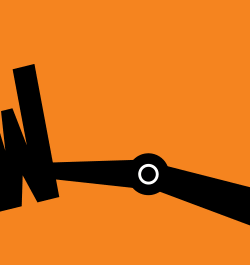
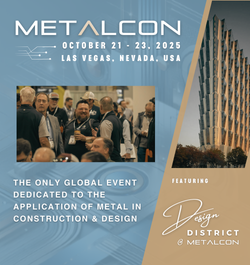
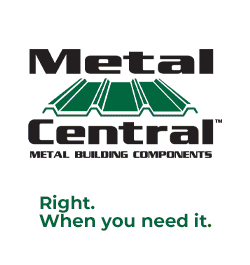









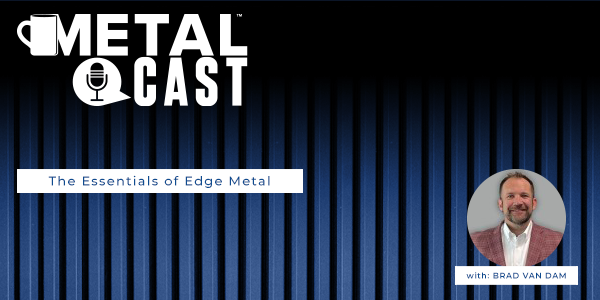


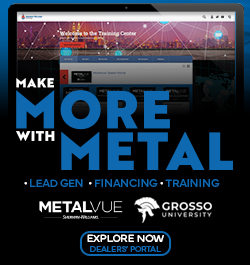
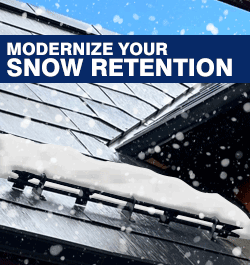
Comments
Leave a Reply
Have an account? Login to leave a comment!
Sign In